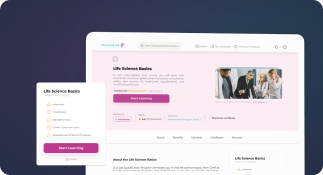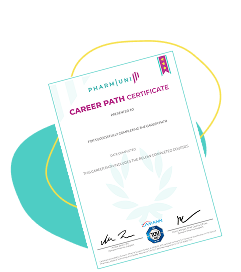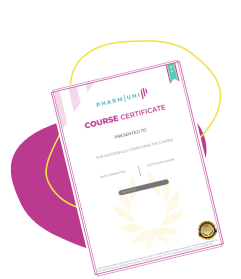In today’s highly regulated industries like pharmaceuticals and MedTech, communication can make or break a company’s reputation. With strict rules from authorities like the FDA, EMA, and global watchdogs, even a single misleading claim or missing disclaimer can trigger serious legal consequences. But it’s not just about avoiding fines — it’s about protecting patients, maintaining brand trust, and building long-term success. Training your marketing team in regulatory compliant communication isn’t optional anymore.
It’s a strategic move that strengthens your operations, accelerates product approvals, and reduces delays. More importantly, it ensures that your brand speaks truthfully — and effectively — in every campaign. In this guide, you’ll learn how to build a well-trained marketing team that communicates confidently and stays fully compliant. Whether you’re in a startup or a global pharma enterprise, these steps will give your team the clarity they need.
Let’s explore how you can bridge the gap between creativity and compliance — and do it right.
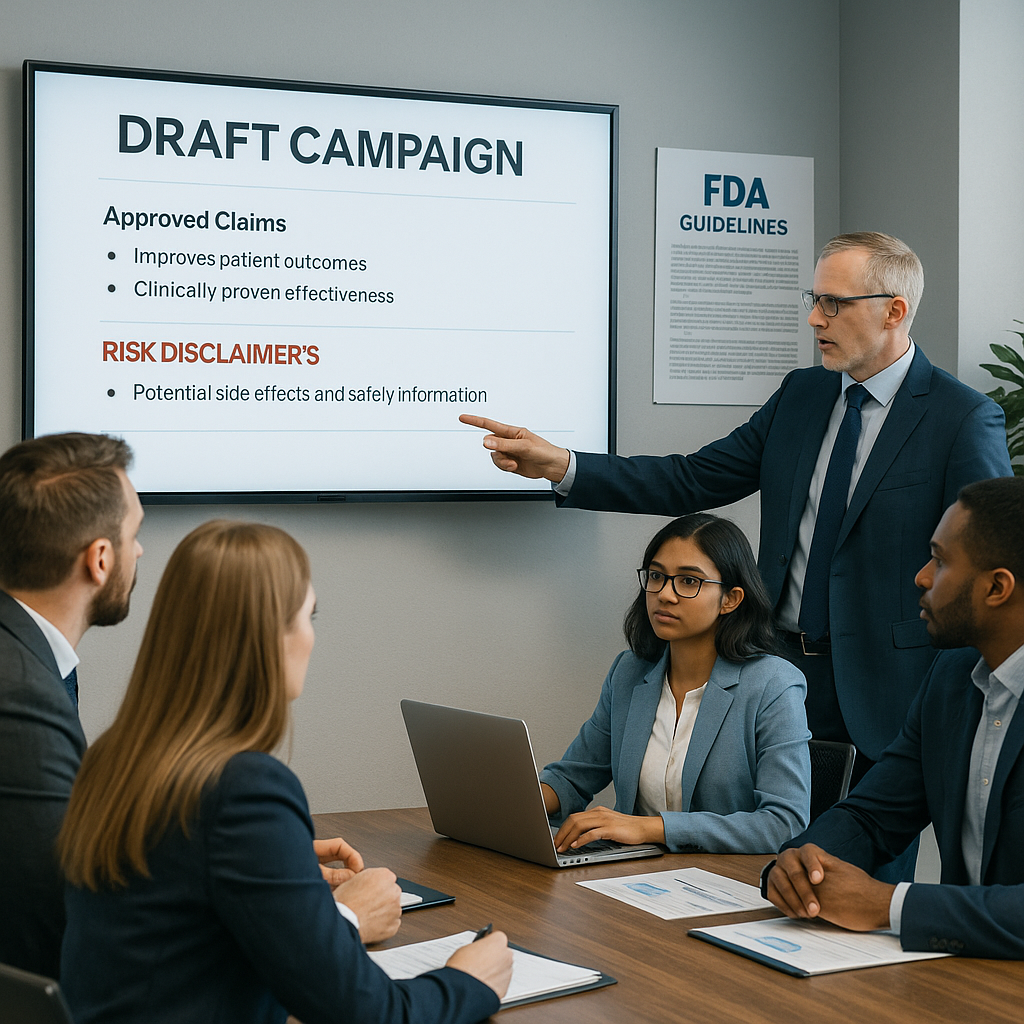
What Is Regulatory Compliant Communication?
Regulatory-compliant communication means that every message you share — from advertisements to social media — follows the laws, standards, and ethical codes set by global health authorities. In pharma and MedTech, you can’t just talk about benefits. You must also clearly disclose risks, stay within approved claims, and avoid any form of misleading information.
For instance, a drug ad can’t promise “guaranteed results” unless clinical data backs it — and even then, the language must reflect real-world evidence. Also, different regions have different rules. What passes in Europe might not be acceptable in the US or Japan.
This type of communication protects consumers from harm and protects companies from litigation. When done right, it also builds credibility and positions your brand as a trusted leader in the field. So, training your team to master these standards is not just smart — it’s essential.
Core Elements of Regulatory-Compliant Communication
To master regulatory-compliant communication, your team must understand its essential components. Each element contributes to ensuring that messaging is accurate, legal, and ethical.
- Truthful Claims - Every claim must be backed by approved data and clinical evidence.
- Risk Disclosure - Marketing must mention known risks and not just focus on benefits.
- No Off-Label Promotion - Never advertise for uses that regulatory bodies haven’t approved.
- Use of Mandatory Disclaimers - Certain content requires specific wording to ensure transparency.
- Proper Branding and Trademark Use - Avoid misusing competitor brands or generic names inappropriately.
- Global Regulatory Variability -Rules differ by region. What works in the EU may break laws in the US.
- Approved Channels Only -Some platforms, like TikTok or WhatsApp, may not meet documentation standards.
Training Your Marketing Team: A Strategic Framework
Regulatory-compliant communication demands more than policy knowledge — it requires habit-building, context, and consistency. That’s why training can’t rely on a single workshop. Instead, companies need a structured framework that supports both knowledge transfer and behavioral change over time.
Marketing teams face constant pressure to publish fast. However, without regulatory awareness, speed turns into risk. A strategic training approach empowers your team to create effective, compliant campaigns — even under tight deadlines. By combining baseline education, role-based scenarios, and interactive feedback loops, you build a foundation that scales. Let’s break it down into two powerful phases.
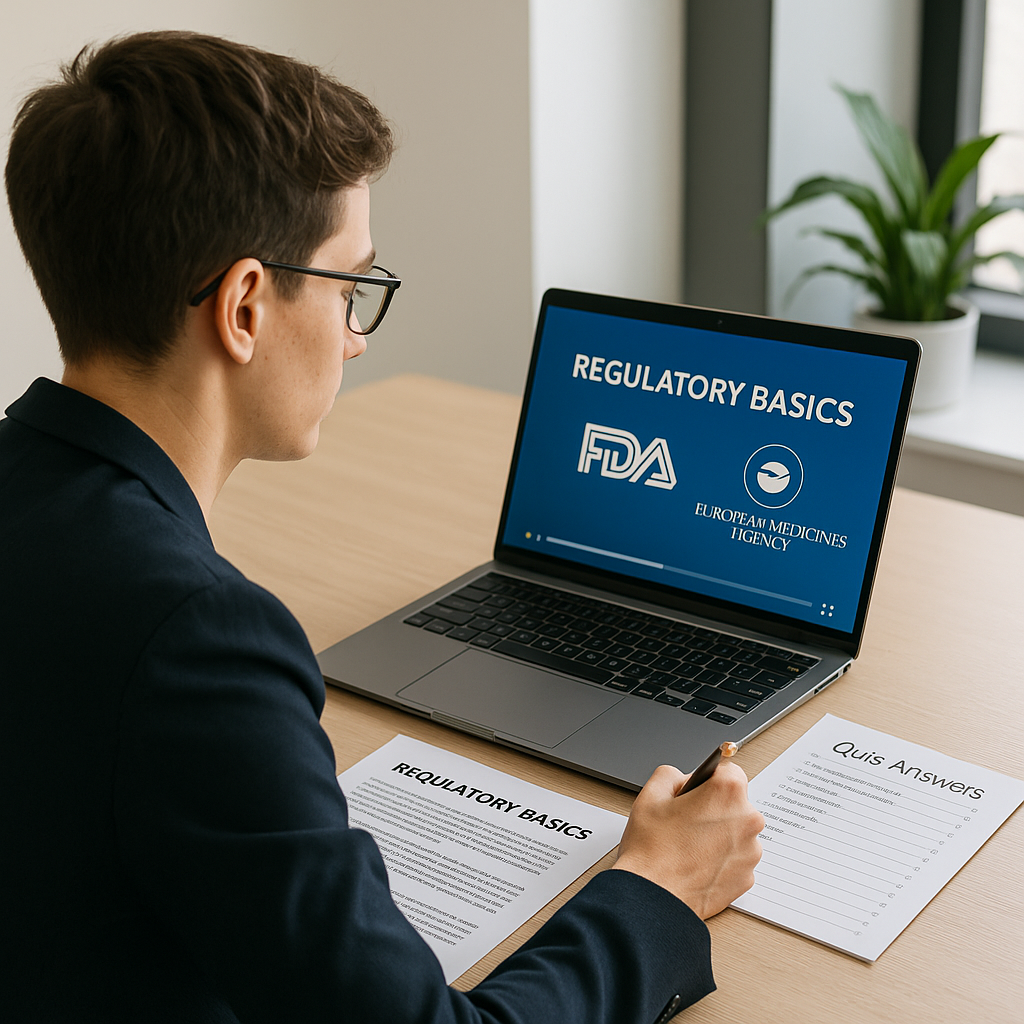
Foundation First: Build Baseline Knowledge
Start with foundational training to ensure every marketer understands key regulations. This includes rules from:
- FDA 21 CFR Part 202
- EMA guidelines on promotion
- ISO 13485 for MedTech marketing
Next, use storytelling to anchor these principles. For example, show how one misleading social post triggered a product recall. Then explain how it could have been avoided. This real-world context sticks better than policy documents alone.
Offer downloadable cheat sheets and region-specific examples. Additionally, build short video modules for faster retention. Encourage new hires to complete this training within their first month. Finally, follow up with mini-quizzes to reinforce what they’ve learned. Over time, this knowledge becomes second nature.
Deepen Knowledge Through Role-Based Scenarios
After mastering the basics, your team must apply their skills in realistic scenarios. Customize exercises for specific roles:
- Copywriters review how to structure claims with supporting data
- Designers learn how to display mandatory disclaimers
- Campaign managers practice timeline coordination with regulatory sign-off
Use interactive workshops to let teams rewrite non-compliant materials into compliant ones. Add timers to simulate real-world pressure. This helps them think quickly while staying within regulatory limits.
Include peer feedback sessions to strengthen learning. Moreover, invite regulatory or medical affairs to review submissions. This collaboration builds bridges between departments. Use these exercises quarterly to reinforce skills. When done consistently, these simulations create confidence and reduce compliance errors in real campaigns.

Tools and Techniques to Support Compliance Training
Training must be ongoing — not a one-time event. Here are the tools to build regulatory-compliant communication habits.
Regulatory Playbooks
Document dos and don’ts by product type and geography.
Checklists for Content Review
Use pre-launch checklists to catch errors early.
Internal Approval Workflow Tools
Tools or custom review boards help streamline signoffs.
Mandatory Compliance Quizzes
Monthly quizzes keep knowledge fresh and identify weak areas.
Pharma-Specific LMS
A learning management system (like Pharmuni) makes training scalable.
Regular Audits and Feedback
Encourage peer-to-peer feedback on campaigns before launch.
Each of these tools reinforces daily habits. They move compliance from theory to action.
Training for Product Launch vs. Awareness Campaign
Not every campaign follows the same rules — and your training must reflect those differences. Product launches and awareness campaigns serve different goals and face unique regulatory risks. Therefore, marketers must learn to tailor both their approach and messaging accordingly.
During product launches, communication is tightly regulated and must mirror the product’s approved labeling. However, awareness campaigns often operate in a grey area. These campaigns can unintentionally imply product promotion without directly mentioning the product. Because of this, teams must train separately for each type. Simulations, content comparisons, and live reviews help clarify those distinctions. Let’s explore how your training should differ for both scenarios — and how to keep teams compliant without limiting creativity.

Product Launch Campaigns: Stick to the Label
Product launches require strict compliance with official product documentation. Therefore, every claim must match regulatory approval.
Train your team to:
- Use approved language from the SmPC or IFU
- Avoid rephrasing clinical outcomes without medical input
- Include all required risk information and disclaimers
- Coordinate closely with regulatory and medical affairs
- Use review checklists before publishing materials
Encourage launch simulations to stress-test workflows and compliance. Add time constraints to simulate market pressures. During debriefs, highlight what worked and what didn’t.
Additionally, reinforce that no creative element should exceed what’s in the approved documentation. Teams often stretch messages unintentionally. With this training, they learn where the true boundaries are — and how to navigate them without risk.
Disease Awareness Campaigns: Avoid Hidden Promotion
Disease awareness campaigns don’t mention products directly. However, they still pose compliance risks if not handled carefully.
Teach your team to:
- Focus on public education, not brand or treatment promotion
- Avoid suggestive phrases like “ask your doctor about options”
- Separate disease education from commercial pages
- Never use imagery or colors associated with the product
- Submit awareness materials for regulatory review if unsure
Use case studies to show when awareness crossed into promotion. For example, campaigns that implied superiority without saying the product name.
Also, provide examples that succeeded with full compliance. This contrast helps teams understand tone, wording, and visual neutrality. Awareness campaigns are powerful when done right. But without proper training, they can trigger investigations — even if unintended.

Common Pitfalls in Regulatory-Compliant Communication
Even experienced teams can slip up. Spot these early and fix them fast.
Misuse of Data
Presenting data out of context or exaggerating significance causes compliance risks. Ensure proper citation and balance.
Ambiguous Language
Phrases like “best-in-class” or “clinically proven” require clear definition or backup.
Inadequate Training for Freelancers
External copywriters often lack industry-specific training. Always onboard them properly.
Skipping Legal Review
Rushing campaigns without signoff invites disaster.
Assuming Global Templates Work Everywhere
Global isn’t always local. Adapt content by region.
Give your team a checklist of these risks. Two sentences of prevention now save weeks of correction later.
Creating a Culture of Regulatory Awareness
Training helps, but culture sustains compliance long-term. A strong regulatory culture keeps teams alert and aligned. Without it, even trained teams may ignore red flags during daily work.
To build this culture, leadership must set the tone. Highlight the value of compliance as part of brand reputation — not just a legal checkbox. Then, reward behaviors that support compliance excellence, even in fast-moving environments.
You can foster this mindset with practical actions like:
- Recognize “compliance heroes” in internal meetings
- Share lessons learned from regulatory wins and mistakes
- Include regulatory KPIs in team evaluations
- Encourage open dialogue with medical and legal teams
- Host cross-functional reviews before campaign launch
Additionally, communicate that compliance protects not just the company, but patients and public health. When values align with daily action, teams stay committed. Over time, compliance becomes second nature — not a burden.
How Pharmuni’s Course Helps You Build Regulatory-Compliant Communication Skills
You don’t have to build this training from scratch. Pharmuni’s Marketing in Pharma and Medtech course is built for professionals like you — those in fast-paced marketing roles who need to stay compliant without slowing down.
The course covers:
- Regulatory rules for both pharma and MedTech
- Best practices for writing compliant content
- Risk management in communication strategy
- Real case studies with breakdowns of what went wrong
It’s taught by experts who’ve seen regulatory pitfalls up close. And since it’s online, your whole team can learn from anywhere. The best part? It’s actionable — with exercises you can immediately apply to your campaigns.
Ready to Master Regulatory-Compliant Marketing?
Conclusion
Training your marketing team for regulatory-compliant communication isn’t a burden — it’s a competitive advantage. With the right systems and mindset, your team can create powerful, creative campaigns that also meet every standard.
You don’t have to sacrifice creativity to stay compliant. Instead, build your team’s confidence to operate within the boundaries — and innovate inside them. By investing in structured training, ongoing practice, and the right tools, you’ll future-proof your marketing function against costly errors.
Start today by sharing this article with your team. Then, explore Pharmuni’s Marketing in Pharma and MedTech course to get your entire team aligned and audit-ready.
Compliance isn’t the end of creativity — it’s the foundation of trust.
References:

Stephanie Männicke
Digital Marketing Especialist at Zamann Pharma Support, brings 8 years of experience in Corporate and Digital Communication. Specializing in Digital Marketing and Content Creation, Stephanie is currently focused on creating strategic content for Pharmuni's networks, especially content on topics such as recruitment, onboarding and employer branding. Outside of work, Stephanie is a mum, a crocheter and a movie fan. An avid reader and in search of expanding her knowledge, Stephanie is always looking for ways to innovate communication in the digital environment and connect people in a genuine way.

Pharmaceutical Water Validation: A Practical and Regulatory-Focused Guide in 2025
Learn how to validate pharmaceutical water systems with a clear, step-by-step approach. This guide covers Purified Water and WFI testing, from user requirements to sampling plans and acceptance limits. You will also learn how to run IQ, OQ, and PQ with strong documentation and traceable evidence.

Good Manufacturing Practices in Canada: Download Official GMP PDFs (2025)
Want official PDFs for good manufacturing practices in Australia? This page helps you choose and download the right TGA/PIC/S documents fast: PIC/S PE009-17 (Parts I–II + Annexes), plus GMP clearance, inspection reliance, code tables, and the submission user guide for TGA Business Services.

Good Manufacturing Practices (GMP) in Australia 2025: Download TGA GMP Guides
Want official PDFs for good manufacturing practices in Australia? This page helps you choose and download the right TGA/PIC/S documents fast: PIC/S PE009-17 (Parts I–II + Annexes), plus GMP clearance, inspection reliance, code tables, and the submission user guide for TGA Business Services.
